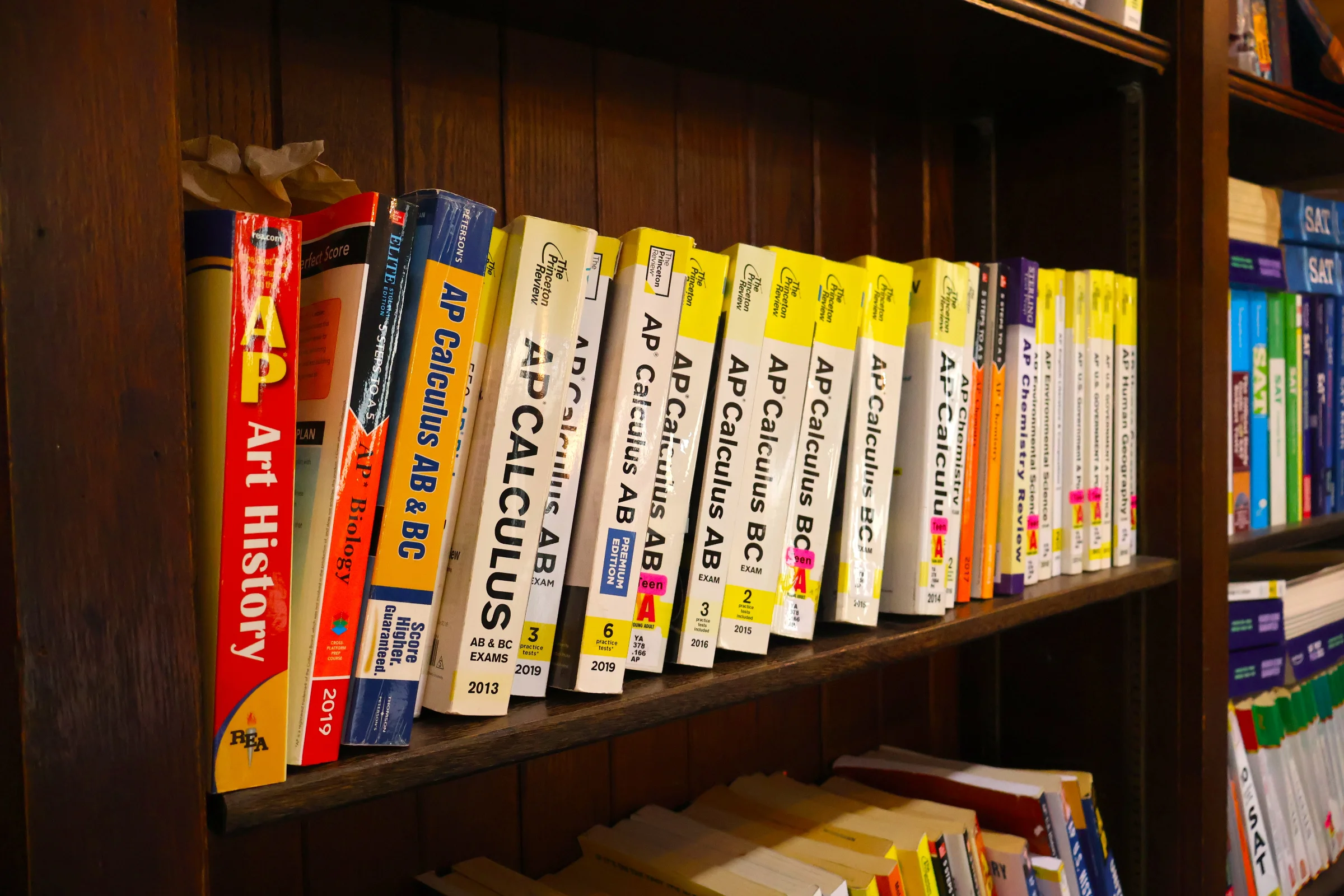Textbook sharing is underappreciated
November, 2025
Photo: Viola Que
The shelves in the IDEAS Center are well-stocked with test prep materials for students to take and reference.
Abandoned in favor of modern methods like YouTube videos and digital practice tests, students frequently put their textbooks to the side in favor of online approaches. According to K-12 Dive’s 2023 article, “teachers increasingly [turn] to digital, self-created materials for lessons.” Additionally, a 2023 survey produced by Bay View Analytics indicates that paper textbook use in K-12 classrooms has declined by “nine percentage points ... compared to the year before”. This seems unsurprising, considering the downsides of paper texts; they are heavy, hard to search through, and often unavailable for annotations. Yet, books can be an essential resource for test preparation, especially for others that may not have access to digital resources.
Despite the immense popularity of digital resources that have swept our schools today, using textbooks remains one of the most effective ways to study. After all, they are the basis of many class curricula. In particular, AP prep books are assembled by pulling common information from previous exams, making them a necessity for any student looking for college credit.
Therefore, if they are so key in a student’s understanding of the curriculum, they should be utilized by everyone looking to succeed. But sometimes students are unable to access these books easily due to financial issues. For example, according to Prep Maven’s list of “the 11 Best SAT Prep Books,” the price of these books can range from $25 to $65 for a single book. This can pose a struggle for some students, as that amount of money is simply too high to spend on one class. This creates inequity in the academic space, in which some students are able to afford prep books and others can only use free digital resources.
Furthermore, there is a lack of awareness about resources already available to students. Indeed, many students do not know that there are actually study materials ready to be checked out in the IDEAS Center at PHS. “I didn’t know that you could check out textbooks,” said Nicole Mah ’29. “I was unaware of such a resource.” The IDEAS Center’s shelves full of study books have great potential to help even the imbalance, but they need to be promoted through inclusion in the freshman orientation spiel and other information from administration. Additional initiatives to encourage book sharing can also create a collaborative environment where resources are readily available. Starting a book drive, for example, allows students who no longer use their prep books to donate them to the school. For example, students who have already taken the SAT or a one-time AP exam don’t need a guide anymore. This would create a library of current resources available to all students.
A sharing program could also be implemented with the existing textbooks we have. If two students are studying for the same test, such as SATs or an AP test, a librarian can help them share a textbook and have a group study session. This also encourages students to communicate and interact with each other, resulting in stronger relationships as well as better academic results.
By increasing awareness of existing materials and creating opportunities for students to share them with each other, PHS can ensure that all students have an equal opportunity to succeed. However, the collective sharing of resources only works if enough people take advantage of it, so the next time you consider buying a $25 Princeton Review book, check the shelves in the IDEAS Center first. More often than not, you’ll find what you need.